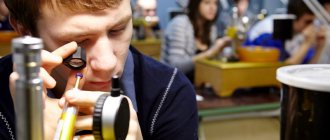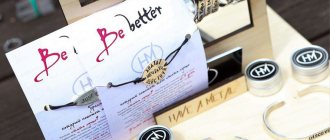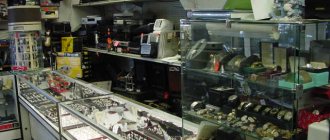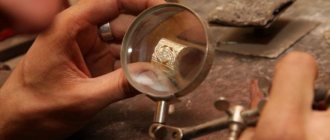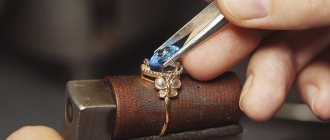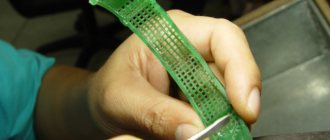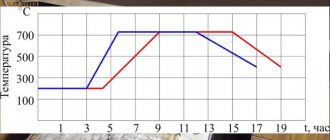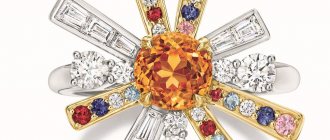Parts must withstand heavy loads (pouring, removal from the workpiece). To give the wax the necessary qualities, paraffin, rosin, boric acid and other substances are used. Dyes are used to label various compositions. The pigment included in the substances does not change the color of the finished product after using the wax.
One of the popular technologies for making waxes is the method of creating three-dimensional parts using photopolymer. The use of 3D printing allows specialists to produce parts with precise shapes. It is popular in many industries. To perform the work, we use modern equipment, which guarantees high quality of finished products.
Features of injection wax waxes
Injection wax is the most common material for reproducing products. It is melted to a liquid state and injected into a rubber mold. The main component is natural or synthetic wax; an auxiliary function is performed by additives that change physical properties, ductility, hardness, and others. When choosing this material for making waxes, you need to consider the following:
- For mass production of products, wax that quickly gains hardness is better suited, this will increase productivity;
- The harder the wax, the more fragile it is. Such varieties are excellent for final manual or automated finishing, decoration with carvings and complex ornaments;
- The use of natural paraffin in manufacturing greatly increases the cost of the material, however, has almost no effect on its characteristics.
Features of sculpting wax waxes
If it is necessary to form a large wax model, using an injector is not the best option; it will not be possible to achieve sufficient quality. In such situations, direct pouring technology is used. To prevent the formation of defects in the workpiece, such as air bubbles, sculpting waxes are used. They are differentiated by color. Green wax is considered the hardest, allowing the craftsman to work out the smallest details. This same wax is also the most versatile, allowing you to make any jewelry, from rings to earrings. The advantage of green wax is the ability to use not only hand tools, cutters and files, but also automatic devices operating at high speeds when forming ornaments and patterns. Melting of the material is excluded, so the workpiece is guaranteed to maintain the required geometry.
Waxes
By injecting melted wax into rubber molds, many different wax models can be made. It is very important to use high-quality wax that has a narrow melting range.
Making wax models
Different materials, each with their own unique characteristics, are suitable for different situations. Softer types of wax are more flexible, making it easier to remove products from rubber molds. To reproduce very smooth surfaces, a stiffer wax and a stiffer mold rubber are better. If you have difficulty choosing the right material, you can always take advice from your wax supplier. Casting production is never limited to one type of wax; it always involves a wide variety of types, shapes, shades and sizes of castings. For the center sprue it is sometimes recommended to use a wax that is different from the wax used to make casting patterns. To avoid tension forces and the ruptures they cause in the molding mass during the wax melting process, the wax in the central sprue must melt at a lower temperature than in the models attached to it. Upon completion of annealing of the mold mass (or, as it is called, flask), there should be no waste left in the form of soot.
This kind of waste can cause deformation of the casting surface, including porosity. The easiest way to determine whether wax leaves soot is to place a sample in a silica crucible and run it through a full annealing cycle. If a black precipitate remains in the crucible, then this is the carbon contained in the wax.
Hot, molten wax is fed into a rubber mold under pressure using a wax injector. A good wax injector should provide constant pressure and temperature. Modern injectors are equipped with automatic locking devices (auto-grippers) that control the weight and volume of the resulting wax model, which makes it possible to produce a series of identical models (waxes). The constant weight of waxes and, accordingly, castings is a very important point, depending on the clamping force and the properties of the wax. When clamping a mold manually, the clamping force depends on operator fatigue. It is recommended to clamp and inject wax once per mold.
Often, before injecting the wax, the mold is coated with a thin layer of talc or other suitable chemical to make the hardened wax model easier to remove. In many enterprises, talc is used only for complex forms. At the same time, it should be remembered that talc, being pressed into the surface of the wax, deteriorates its quality. Alternatively, you can use flour or cornstarch, which burns during the annealing of the mold. The mold must be regularly cleaned of talc residues so that the quality of the surface of the figures does not deteriorate. Rubber molds should be stored in a dark place, protected from bright light and dust, since most types of rubber decompose in the sun.
All molds must be accurately labeled and all wax injection conditions must be recorded to maintain high quality. Molds should be checked regularly for signs of damage or decomposition, and unusable molds should be discarded and replaced with new ones from the original design. The use of damaged molds leads to the appearance of waxes with defects and increases the cost of final processing of the product after casting.
Before installing the Christmas tree, you must carefully inspect all the waxes, throw away the defective ones and prepare new ones instead. This is much more effective than wasting time repairing defects. Sometimes it happens that half of the working staff is engaged in repairing waxes, which is extremely uneconomical. To obtain a high-quality casting, defective or old waxes should never be reused, even if it is possible to return clean wax from the central sprue to production, since it negatively affects the quality of the castings. Melted wax cannot be reused, since it degrades during melting, collecting mold particles and dust. It is also not recommended to store waxes for a long time.
After production, fresh wax models should be stored in a cool, dust-free place, neatly laid out on a tray. If you pile them haphazardly, they may become damaged and bend.
The size and position of the gates play an important role. To avoid shrinkage, underfilling, or other problems, it is recommended to use feeders that are round rather than square or conical.
Christmas tree installation.
When installing a Christmas tree, you should avoid as much as possible mounting waxes of different shapes, sizes and weights on the same Christmas tree. If this is still necessary, the smallest waxes should be installed on top of the Christmas tree, the largest - on the bottom. To avoid dangerously high temperatures for the mold mass when casting molten metal, the waxes should not be placed too close to each other. The free space between the waxes serves as the walls of the molding mass, and if they turn out to be too thin, they will overheat, which can cause poor surface quality of the castings or porosity. Ideally, you should use a center sprue that is tapered at the top so that the thickest part is on the profit side. Installation of wax models is traditionally carried out at an angle of 30-45 degrees to the horizontal; this condition is ideal for centrifuge casting.
Wax models should be mounted on the central sprue not in a vertical line, but in a spiral, so that there are no adverse consequences during hardening. It is better to mount small parts in groups, and with a small number of products, a horizontal arrangement can be used.
To avoid shrinkage of the sprue in the mold, it is necessary that the soldering points are smooth and without corners. The occurrence of shrinkage will impede the flow of liquid metal into the casting and will lead to non-metallic inclusions due to destruction of the mold mass during casting of liquid metal in the narrowing zone.
The center sprue should, when combined with the rubber stand, form a smooth, protrusion-free cone for profit, which will avoid turbulence when pouring metal. Do not forget that in order to accurately calculate the weight of the precious metal, after completing the Christmas tree, you need to weigh it, and the rubber stand should be weighed separately. All weighing results are entered into the catalog to be able to calculate the weight of the wax, and to calculate the weight of the gold alloy required for casting, you should multiply the weight of the wax tree minus the stand by the density of the alloy. This basic rule can be adjusted based on your own experience.
It is necessary to know exactly the density of all cast gold alloys used. If the supplier cannot provide such values, they can be determined independently, using scales, according to Archimedes' principle.
The wax tree can be mounted in a horizontal, inclined or vertical position using special tools, based on the operator's preferences.
There is a variety of tooling available, but most foundry workers prefer to make it themselves. Some foundries use hollow central sprues, which make it possible to install a larger number of waxes and use less metal for such a sprue than for a solid sprue of the same diameter.
Wax trees can collect dust due to static charges. If this problem occurs, they should be washed with surface tension raising liquid or a diluted detergent solution and then rinsed with deionized water.
This article covers best practices for the initial four stages of casting (excluding design). To obtain high quality castings, do not neglect the importance of proper manufacturing. It should also be noted that all work must be carried out in a perfectly clean room, free of dust. The preparation of molds, waxes, and installation of Christmas trees must be carried out in a room separate from where the preparation of the mold mass, annealing, and casting takes place.
To obtain more detailed information and a deeper understanding of the technologies and processes described, we recommend that you read other articles on this topic.
Automation of wax production
In addition to hand tools and injectors, when making waxes, it is permissible to use milling machines using 3D processing technologies. They work mainly with green wax, since its physical and chemical properties allow mechanized processing; even when in contact with a cutter rotating at high speeds, the material does not melt. The advantages of using machines are as follows:
- Acceleration of wax formation;
- The ability to mass produce waxes for serial production of jewelry without adjusting working algorithms or loading new sketch files;
- The highest quality of finished parts, 100% compliance with the sketch;
- Saving material due to rational use and absence of defects;
- Possibility of making wax for the production of any jewelry.
Modern milling machines are adapted to use common grades of sculpture wax; there is no need to purchase specialized materials.
Regardless of the manufacturing scheme, wax is an essential element in the production of jewelry. It allows you to get a decoration that is perfect from all points of view, 100% consistent with the original drawing or sketch. This achieves saving of precious metal and eliminates defects.
Order a service
Raw materials used in the process of creating waxes
When producing stencils, professionals use milling green wax. For high-quality processing on a machine, it must be plastic and hard. The surface of the material must be sensitive to minimal vibrations of the milling tool.
Large models and thin stencils, the thickness of which does not exceed 0.2 mm, are made from milled green wax. Specialists give shape to such a substance even when creating complex structures.
After making the mold, the wax is not used a second time, since the raw material burns out during low tide. This ensures the purity and freshness of the materials used in waxing. Finished products cast in wax are of high quality and unique design.
When creating waxes for casting precious items, skill, patience and perseverance are important. Only specialists with such characteristics create unique molds for the manufacture of products from precious metals. Making waxes takes a lot of time. Milling takes up to two days, 3D printing technology takes from several hours to two days. The timing of the work depends on the complexity of the order and its volume.
Order a service
